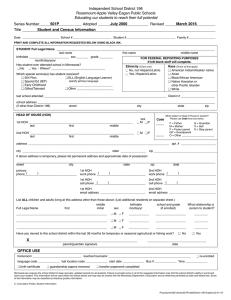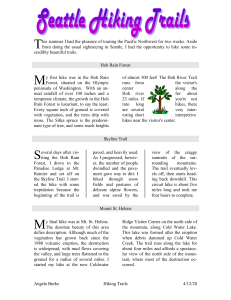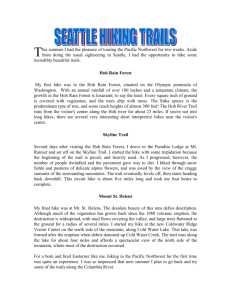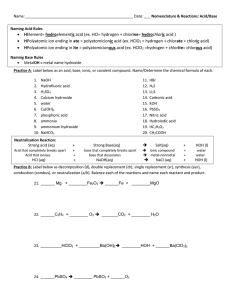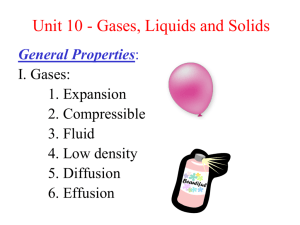Enclosure 3A - Project Summary Form
advertisement
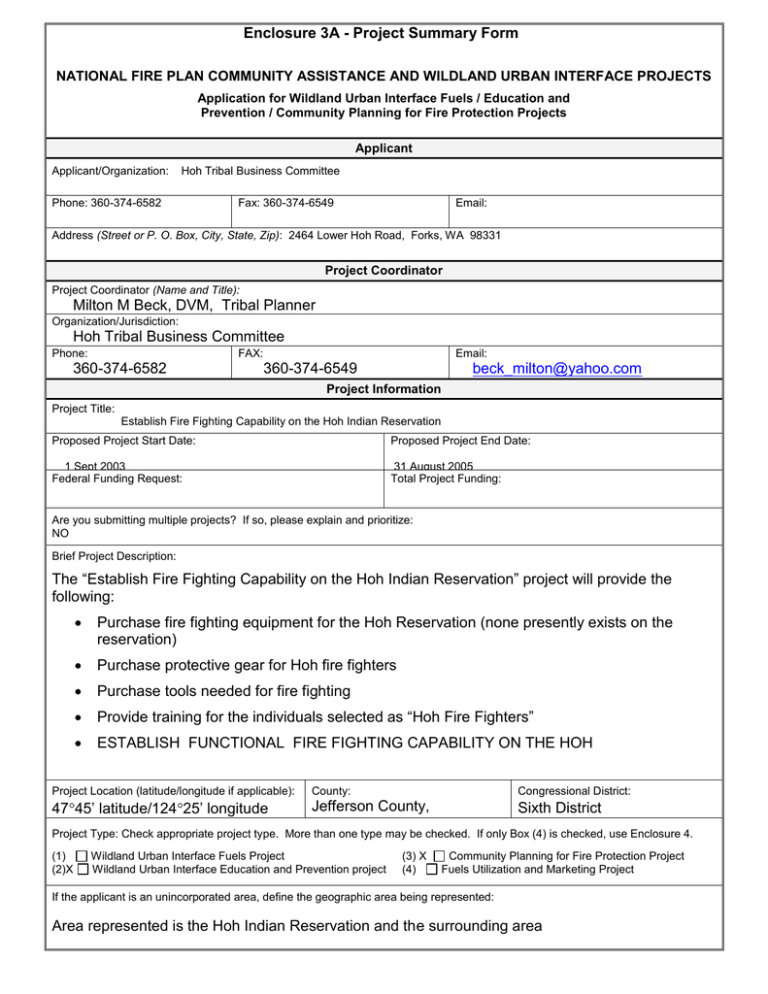
Enclosure 3A - Project Summary Form NATIONAL FIRE PLAN COMMUNITY ASSISTANCE AND WILDLAND URBAN INTERFACE PROJECTS Application for Wildland Urban Interface Fuels / Education and Prevention / Community Planning for Fire Protection Projects Applicant Applicant/Organization: Hoh Tribal Business Committee Phone: 360-374-6582 Fax: 360-374-6549 Email: Address (Street or P. O. Box, City, State, Zip): 2464 Lower Hoh Road, Forks, WA 98331 Project Coordinator Project Coordinator (Name and Title): Milton M Beck, DVM, Tribal Planner Organization/Jurisdiction: Hoh Tribal Business Committee Phone: FAX: 360-374-6582 Email: 360-374-6549 beck_milton@yahoo.com Project Information Project Title: Establish Fire Fighting Capability on the Hoh Indian Reservation Proposed Project Start Date: Proposed Project End Date: 1 Sept 2003 Federal Funding Request: 31 August 2005 Total Project Funding: Are you submitting multiple projects? If so, please explain and prioritize: NO Brief Project Description: The “Establish Fire Fighting Capability on the Hoh Indian Reservation” project will provide the following: Purchase fire fighting equipment for the Hoh Reservation (none presently exists on the reservation) Purchase protective gear for Hoh fire fighters Purchase tools needed for fire fighting Provide training for the individuals selected as “Hoh Fire Fighters” ESTABLISH FUNCTIONAL FIRE FIGHTING CAPABILITY ON THE HOH Project Location (latitude/longitude if applicable): County: Congressional District: 4745’ latitude/12425’ longitude Jefferson County, WAWashington Sixth District Project Type: Check appropriate project type. More than one type may be checked. If only Box (4) is checked, use Enclosure 4. (1) (2)X Wildland Urban Interface Fuels Project Wildland Urban Interface Education and Prevention project (3) X (4) Community Planning for Fire Protection Project Fuels Utilization and Marketing Project If the applicant is an unincorporated area, define the geographic area being represented: Area represented is the Hoh Indian Reservation and the surrounding area Enclosure 3B (Page 1 of 3) - Project Narrative Description Applications for funding must include a narrative response that describes the proposal. Please do not submit responses longer than one page, single space, 12-pitch font. Describe project including, but not limited to: project location Address these project implementation items as anticipated outcomes applicable: measures and reporting interagency partners project relationship to community or natural landscape fire plans project time frames and income specify types of activities and equipment used amount or extent of actions (acres, number of homes, etc) environmental, cultural and historical resource requirements Response: Project Location: Hoh Indian Reservation 4745’ latitude/12425’ longitude in western Jefferson County, WA, and the area surrounding the reservation which has very limited fire fighting capability. One fire truck is located at the Kalaloch Lodge area on the Olympic National Park, 13 miles away (but potential crews are scattered due to park duties). The Forks, WA fire department is 30 miles away. Project Implementation: Purchase fire trucks, equipment, tools and provide training to volunteer fire fighters to establish fire fighting capability at the Hoh Indian Reservation. Anticipated outcome: Fire Fighting capability at the Hoh. Measures of reporting: Fire Fighting readiness, no. of trained fire fighters, weekly inspection and trial operation of fire fighting equipment. Interagency Partners: The Hoh will establish memorandums of agreement (MOU) with Jefferson County, Clallam County, National Park Service, National Forest Service, WA Dept. of Natural Resources, City of Forks, and US Fish and Wildlife Service to develop mutual aid in fire prevention, fire fighting training, and fire fighting. Community fire plans and natural landscape plans will be established to prevent possible fires from spreading to surrounding forests on tribal, National Park and private lands. Project Time Frames: 1. Complete community fire station (underway with Tribal ($88 K ) and BIA funding – Est. 1 Oct 03 2. Purchase fire fighting equipment – ASAP after funding available and fire station complete to house the equipment – Est. Nov 2003. 3. Begin volunteer fire fighter training – Est. Nov 2003. 4. MOUs – Begin June 2003 or as soon as project funded. 5. Community Fire Plan and natural landscape plan – Begin survey May 2003. Projected Income: $0.00 Extent of Action: 1. The Hoh Indian Reservation is approximately 440 acres. 2. Surrounding inhabited area involves an area of 20 miles of the Hoh Reservation (one fire truck within this area, at Kalaloch with no crew near by). 3. Number of homes and buildings on the Hoh 40. 4. Number of homes (35)/business facilities (45) within 15 miles of the Hoh (estimated). Types of equipment used: (expected) 1. Tanker/Pumper Truck (used). 2. Wildland capable Tanker/Pumper Truck (used). Environmental, cultural and historical resource requirements: The Hoh Indian Reservation includes homes, historic cemeteries, historic structures, historic sites and forests as well as riparian woods, forests, wet lands, Bald Eagle nesting sites and other probable sensitive habitats. The immediate surrounding area is national park, the Hoh River, and the Olympic Coast National Marine Sanctuary, and the Quillayute Needles National Wildlife Refuge. Fire Fighting capability is required to provide fire protection for these resources. While the Hoh River, the Olympic Coast National Marine Sanctuary, and the Quillayute Needles National Wildlife Refuge are not subject to burning, they would be impacted by fires on the land due to loss of ground cover and stabilization which would result in pollution of the waters and damage to marine and fresh water organisms. Enclosure 3B (Page 2 of 3) - Project Evaluation Criteria Applications for funding must include narrative responses that address the following four criteria. Within each criterion, subcriteria are listed in descending order of importance. Limit your responses to the areas provided. 1. Reducing Fire Risk. (40 points)) A. Describe how the proposal promotes reduction of risk in high hazard areas or communities, or natural landscapes. B. Describe how the proposed project benefits resources on federal land or adjacent non-federal land, or how it protects the safety of communities. C. To what extent does the project implement or create a cooperative (1) fuels treatment plan or (2) community fire strategy (include evidence of the plan if it already exists)? D. Explain to what extent the affected community or proponent has been involved or plans to involve the affected community in a qualified fuels education program (e.g., FIREWISE). E. Explain how the proposal (1) leads to, enhances or restores a local fire-adapted ecosystem, and/or (2) mitigates or leads to the mitigation of hazardous fuel conditions. F. How will the proposed treatments or programs be maintained in future years? Response: A. The current risk to surrounding natural landscapes is low but with a survey and elimination of problems that may be identified, using volunteer labor, the risks will be reduced. Having fire fighting capability at the Hoh will allow the prevention of possible fires from spreading to the surrounding natural landscapes. B. The project benefits resources on adjacent federal land and near-by non-federal land by providing fire fighting capability in the immediate area which does not really exist at the present time. C. No current community fire strategy exists, there has been no direction for the Hoh Tribe in that area, no fire fighting capability, and therefore no perceived reason to establish such a strategy by the Hoh population. A strategy will be developed. D. An education program will be established to inform the population on fuel handling and storage to prevent or reduce fire hazards on the reservation. E. Funding of this project will give impetus to establish community fire plans and natural landscape plans to prevent possible fires from spreading to surrounding forests on tribal, National Park and private lands. F. The project will be maintained in future years, after this two year grant funded project, with tribal income which has recently began to come into the tribe. 2. Increasing local capacity. (30 points) A. How would the proposal improve or lead to the improvement of the local economy in terms of jobs and sustainable economic activity? How many jobs are expected to be created or retained and for how long (please distinguish between essentially yearround and seasonal jobs)? How will this proposal link to toher projects (or proposed projects) to create year-round jobs? B. To what extent will this project be offered to serve as a model for other communities or natural landscapes? C. Will biomass or forest fuels be utilized; if so, in what manner and how much? Response: A. This project will provide about 8 part-time jobs, but the main effect will be to foster economic development on the reservation by providing fire protection, which does not exist at the present. Economic development requires buildings and grants or loans may not be available if fire protection is not in place. The economic development plan, which is being drawn up at this time, will provide employment for all reservation residents that want a job and 10 to 20 additional jobs when it is implemented. B. This project can be used as a model for cooperative intergovernmental efforts and how it can benefit communities and natural landscapes. Important natural landscapes certainly exist in the area and can benefit and are enhanced through proper planning and implementation of education programs, fire prevention and fire protection. C. Biomass or forest fuels are currently being used on the Hoh. They are the main source of fuel for the population. Enclosure 3B (Page 3 of 3) - Project Evaluation Criteria 3. Increasing interagency and intergovernmental coordination. (15 Points) A. Describe how this project implements a local intergovernmental strategy or plan, or creates such a plan. Describe the plan if it already exists. B. Explain the level of cooperation, coordination or strategic planning through a “Local Coordination Group” for wildland fire activities, or among federal, state, tribal, local government and community organizations. List the cooperators (a detailed list of cooperators will be required for projects that are funded). Response: A. A memorandum of agreement (MOU) has been drafted to establish mutual police protection with area law enforcement agencies and implementation of this MOU is being planned for negotiation. B. The Hoh will attempt to establish MOUs with the following agencies for mutual fire protection efforts and fire training opportunities: 1. Jefferson County 2. Clallam County 3. Olympic National Park 4. US National Forest Service 5. US Fish and Wildlife Service 6. WA Dept. of Natural Resources 7. City of Forks 4. Expanding Community Participation. (15 Points) A. To what extent have interested individuals, groups, and communities been provided an opportunity to become informed and involved in this proposal? B. Describe the extent of local support or opposition for the project, including any cost-sharing arrangements. C. What are the environmental, social and educational benefits or concerns of the project? Response: A. Copies of the grant proposal and grant announcement have been/or will be provided to the following agencies: 1. Jefferson County 2. Clallam County 3. Olympic National Park 4. US National Forest Service 5. WA Dept. of Natural Resources 6. City of Forks B. No agreements for support or cost sharing have been discussed at this time. C. The Hoh Indian Reservation has historic cemeteries, historic structures, historic sites and forests as well as riparian woods, forests, wet lands, Bald Eagle nesting sites and other probable sensitive habitats. The immediate surrounding area includes the Olympic National Park, the Hoh River, and the Olympic Coast National Marine Sanctuary, and the Quillayute Needles National Wildlife Refuge as well as private lands and homes. The project would improve the fire protection capability for the entire area. Educational benefits will reduce the fire potential for the Hoh Reservation and area. This project will improve the social atmosphere for the area by the Hoh people helping to protect their neighbors. Enclosure 3C - Project Work Form Tasks Time Frame Responsible Party Complete community fire station May 2003 – Oct 2003 Southern Puget Sound Indian Housing Authority, Ex.Dir. – Dave Bell Purchase fire fighting equipment Oct 2003 – Dec 2003 Lin Guard – Hoh Tribal Business Committee (HTBC) Executive Director Volunteer fire fighter training Oct 2003 – Nov 2004 Milton M Beck HTBC Tribal Planner MOUs May 2003 – June 2004 Lin Guard – HTBC Executive Director Community Fire Plan and Natural Landscape Plan Development and Implementation May 2003 – June 2004 Milton M Beck HTBC Tribal Planner Enclosure 3D Project Budget Cost Category Description Personnel Admin (5 - 10% of time) (2 yr) 8 Part-Time Fire Fighters (2 yr) Subtotal Federal Agency Applicant Partner 1 Partner 2 Total $5,500 $57,600 $63,100 $5,500 $57,600 $63,100 $825 $9,792 $825 $9,792 $10,617 $5,400 $5,400 $5,400 $5,400 $65,000 $16,200 $81,200 $65,000 $16,200 $81,200 $2,400 $1,200 $3,600 $2,400 $1,200 $3,600 $80,320 $80,320 Subtotal $80,320 $80,320 Total Costs $244,237 $244,237 $-0- $-0- Fringe Benefits Admin (2 yr) 8 Part-Time Fire Fighters (2 yr) Subtotal Travel Fire Fighters (Training) Subtotal Equipment Fire Trucks (2) used Fire Protective Gear & Equipment Subtotal Supplies Fuel for trucks Fire station supplies Subtotal Contractual Subtotal Other Indirect (49%) Project (Program) Income1 (using deductive alternative) 1 Program income is the gross revenue generated by a grant or cooperative agreement supported activity during the life of the grant. Program income can be made by recipients from fees charged for conference or workshop attendance, from rental fees earned from renting out real property or equipment acquired with grant or cooperative agreement funds, or from the sale of commodities or items developed under the grant or cooperative agreement. The use of Program Income during the project period may require prior approval by the granting agency.
